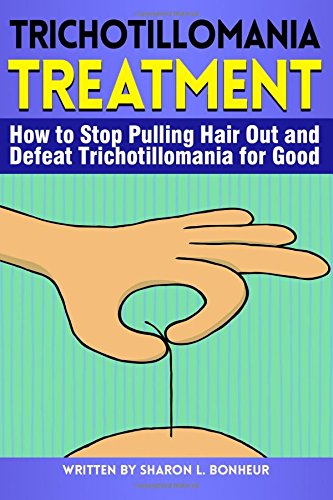Table Of Content

One theory on a biological level is that there is some disruption in the system involving one of the chemical messengers between the nerve cells in parts of the brain. There may be also a combination of factors such as a genetic predisposition and an aggravating stress or circumstance; as with many other illnesses. Further, trichotillomania could be a symptom caused by different factors in different individuals just as a cough can be produced by a multitude of different medical problems. Hair pulling can lead to great tension and strained relationships with family members and friends. Family members may need professional help in coping with this problem. Researchers suggest approximately 1 or 2 in every 50 people experience some level of trich in their lifetime.
How do I take care of myself?
It’s also not something you should treat on your own, partly because both medication and therapy methods often need a prescription or other input from a healthcare provider. People who pull out their hair often cause damage to their skin and tissue just underneath the skin’s surface, especially if they use any kind of personal care tool like tweezers. Skin and tissue damage sometimes need repair or skin grafting to fix. Damage to skin caused by hair pulling can also cause permanent hair loss in affected areas. Anxiety refers to a group of disorders that are collectively the most common mental health condition in Australia. Every person experiences anxiety throughout their lives, but for some, anxiety is constant, overwhelming and interferes with their ability to go about their daily life.
Top doctors in ,
Your doctor may refer you to a psychiatrist (or a child to a paediatric psychiatrist) for diagnosis. It is likely that genetics and the environment both play a part. Healthdirect Australia is a free service where you can talk to a nurse or doctor who can help you know what to do. According to 2020 research, trichotillomania rates of 0.6% to 3.5% were found in small samples of university students.
"BFRB + ADHD: Helping Your Child with Hair Pulling and Skin Picking" [Video Replay & Podcast #453] - ADDitude magazine
"BFRB + ADHD: Helping Your Child with Hair Pulling and Skin Picking" [Video Replay & Podcast #453].
Posted: Mon, 22 May 2023 07:00:00 GMT [source]
When should I see my doctor?
By looking at these records, the therapist and individual can find patterns of behavior. For example, a person examining their journal may realize they always pull their hair while they watch TV. Trichotillomania, also called compulsive hair pulling, is a very treatable condition. The right therapist can help a person quit the hair-pulling behavior and address any underlying emotional concerns. Research into treatments for BFRBs, particularly hair pulling disorder and skin picking disorder, has grown steadily over the past decade.
Like other words, trichotillomania has also morphed and mutated into various forms. The disorder is oftentimes simply referred to as trich as a shorthand nickname. Occasionally, the disorder is known as trichotillosis or trichomania. Even though there are changes to the root word of varying subtlety, the actual definition of trichotillomania does not alter in any way. This section will be updated with information, advice and features for children and young people (up to age 18).
In some cases, people engage in “rituals” after pulling, such as rolling the hair between their fingers, touching it to their lips or face, or inspecting the end to look at the root. Other people with trichotillomania eat their pulled hairs, a condition known as trichophagia. While the exact prevalence of trichophagia is not well understood, some studies estimate it occurs in 20 to 30 percent of those with trichotillomania.


Those who have TTM regularly have unexplained, uncontrollable urges to pull out their hair, even though they make many attempts to stop or decrease the behavior. Because eyelashes protect your eyes from dust and other irritating things, pulling them out can make you more likely to get eye infections and injuries. Pulling can also hurt the delicate skin on your eyelids, which makes it harder for eyelashes to grow back.
Symptoms of trichotillomania
Like the urge to pull for people with trichotillomania, they can be very hard or impossible to ignore. Some people with trichotillomania also pull out the hair from their eyebrows. This goes beyond usual grooming, and people have trouble resisting the urge to pull their eyebrows. If you only pull your eyebrows, and not any other hair, it's sometimes considered a minor form of trichotillomania. Another form of therapy to treat trichotillomania is cognitive behavioral therapy (CBT). CBT goes hand in hand with HRT but is a deeper dive into the thoughts behind a person’s hair-pulling.
Treatment
Most of the time, people with trichotillomania pull out their hair with their fingers, but you might also use tweezers or other tools. With focused pulling, people know that they are doing it but can't stop themselves. People sometimes have rituals or routines for focused pulling, like playing with the hair you pull, tasting it, or smelling it. However, treating the underlying negative emotions may help prevent the urge to pull your hair from coming back.
Remember that recovering from Trichotillomania can take time, so try to be patient and gentle with yourself. To learn how to talk to your doctor about Trichotillomania, read on. Affected people may feel embarrassed by or ashamed of the way they look or of their inability to control their behavior.
Research suggests that N-acetylcysteine (as-uh-tul-SIS-tee-een), an amino acid that affects mood, also may help. Another option that research suggests may have benefit is olanzapine (Zyprexa). This drug is used to treat certain serious mental health conditions that affect the mind.

No comments:
Post a Comment